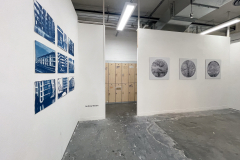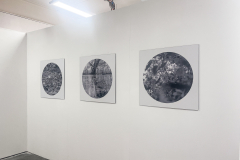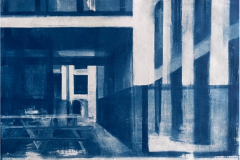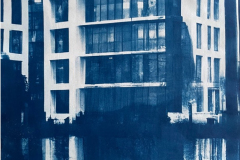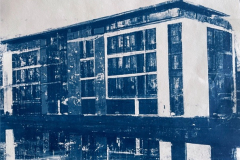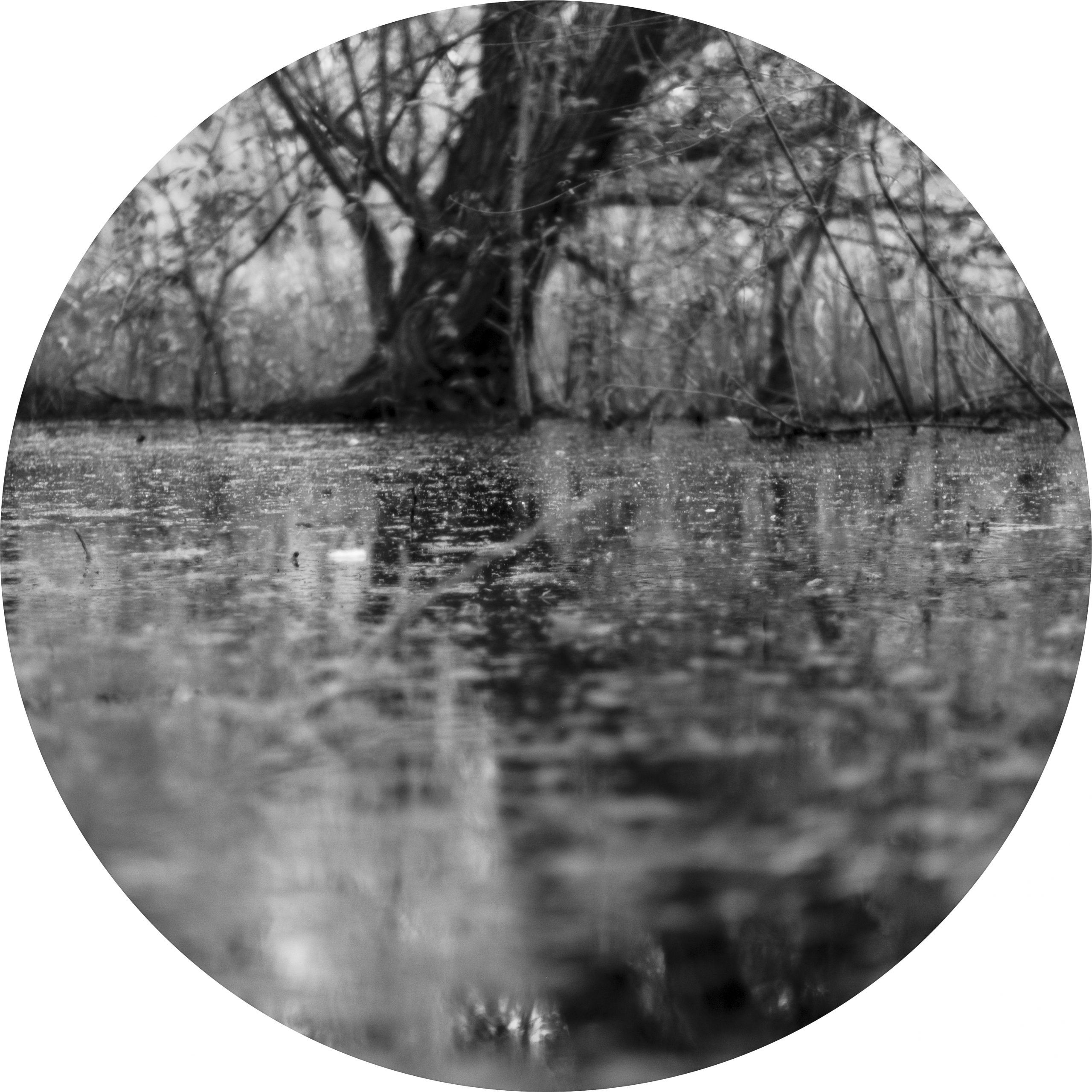Terra Privata
The prevalence of private housing developments on previously industrial sites in east London has led to a proliferation of privately-owned public spaces (POPS). These include parks and other ‘green spaces’ that are freely open to the public, but subject to any conditions the owner wishes to impose, including possible restrictions on photography. My contribution to the DFA Showcase brings together work from three series to explore three privately owned public spaces in east London.
Blueprints for a Connected Community 1-9
Nine handprinted cyanotypes from digital negatives on Canson Mixed Media paper, 42 cm x 30 cm.
Images generated by DALL-E2, ‘an AI system that can create realistic images and art from a description in natural language’ (Open AI website, accessed 29.05.23)’ from in situ descriptions of three private housing developments in east London. Prints exposed in natural light, processed in water and dried in the air in various east London locations.
Mature Stage of Life, 2023
Three 70 cm x 70 cm UV cured pigment prints on dibond
There are no mature trees on the three developments. These infra-red photographs are of the nearest ancient or veteran tree to each place, identified using the Woodland Trust Ancient Tree Inventory. ‘Veteran trees are complex, support biodiversity, have cultural and heritage value and provide continuity in a changing world. They are usually in their second or mature stage of life and bear ‘the ‘scars’ of age such as decay in the trunk, branches or roots, fungal fruiting bodies, or dead wood’ (Ancient Tree Guide no.4: What is an ancient tree?, The Woodland Trust, 2008: 5).
A New Kind of London Living, 2023
Three 70 cm x 70 cm UV cured pigment prints on dibond
Late nineteenth century photographic emulsions are sensitive to just ultraviolet and blue, and unable to register chlorophyll, only perceptible in the near infra-red portion of the electromagnetic spectrum. This gives the landscape a muted and distant allure, producing images that supported the spurious colonial notion of ‘terra nullius’. Present day developers adopt a similar position, claiming to bring new value to spoiled places, for instance ‘restoring a sense of ecological balance to this once industrial site’. The images in this series are made at the edges of each of the three developments with a sensor that simulates nineteenth century emulsions.

